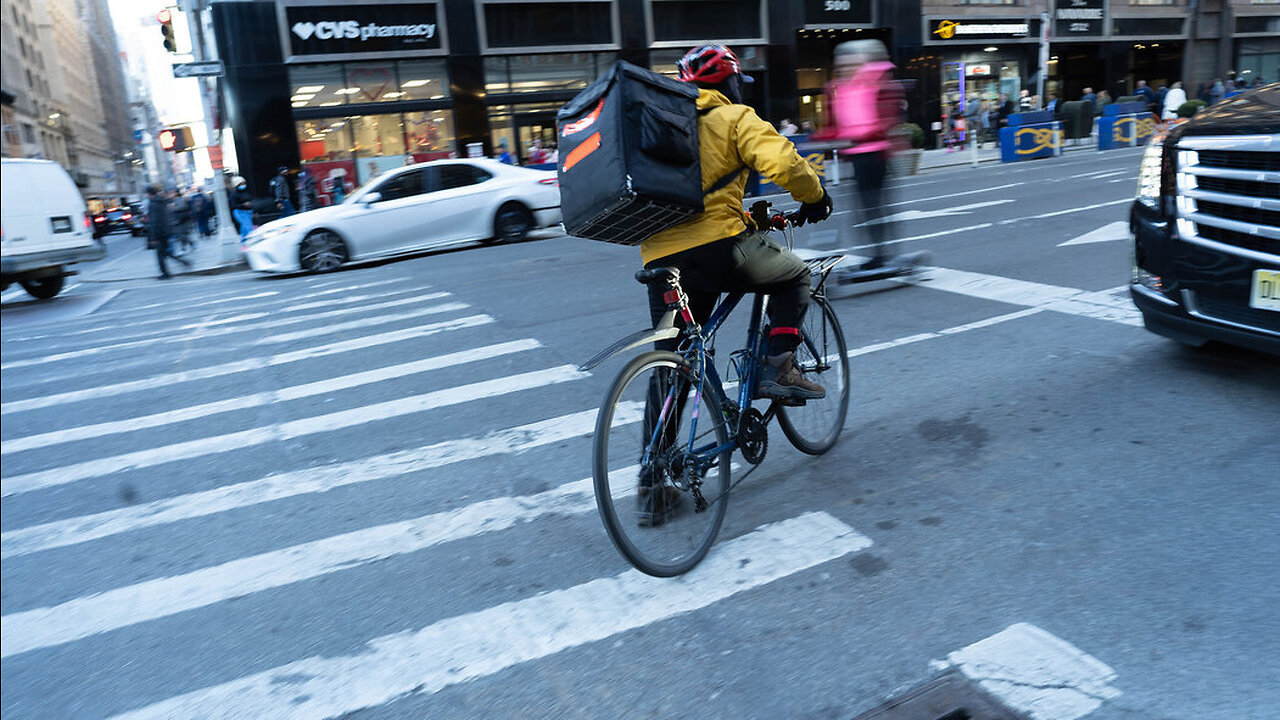Premium Only Content

Opinion A.I. Photoshopping Is About to Get Very Easy. Maybe Too Easy. - The New York Times
🥇 Bonuses, Promotions, and the Best Online Casino Reviews you can trust: https://bit.ly/BigFunCasinoGame
Opinion A.I. Photoshopping Is About to Get Very Easy. Maybe Too Easy. - The New York Times
Farhad Manjoo Video Credit Credit... Illustration by Rebecca Chew/The New York Times Send any friend a story As a subscriber, you have 10 gift articles to give each month. Anyone can read what you share. Photoshop is the granddaddy of image-editing apps, the O.G. of our airbrushed, Facetuned media ecosystem and a product so enmeshed in the culture that it’s a verb, an adjective and a frequent lament of rappers. Photoshop is also widely used. More than 30 years since the first version was released, professional photographers, graphic designers and other visual artists the world over reach for the app to edit much of the imagery you see online, in print and on billboards, bus stops, posters, product packaging and anything else the light touches. So what does it mean that Photoshop is diving into generative artificial intelligence — that a just-released beta feature called Generative Fill will allow you to photorealistically render just about any imagery you ask of it? (Subject, of course, to terms of service.) Not just that, actually: So many A.I. image generators have been released over the past year or so that the idea of prompting a computer to create pictures already seems old hat. What’s novel about Photoshop’s new capabilities is that they allow for the easy merger of reality and digital artifice and they bring it to a large user base. The software allows anyone with a mouse, an imagination and $10 to $20 a month to — without any expertise — subtly alter pictures, sometimes appearing so real that it seems likely to erase most of the remaining barriers between the authentic and the fake. The good news is that Adobe, the company that makes Photoshop, has considered the dangers and has been working on a plan to address the widespread dissemination of digitally manipulated pics. The company has created what it describes as a “nutrition label” that can be embedded in image files to document how a picture was altered, including if it has elements generated by artificial intelligence. The plan, called the Content Authenticity Initiative, is meant to bolster the credibility of digital media. It won’t alert you to every image that’s fake but instead can help a creator or publisher prove that a certain image is true. In the future, you might see a snapshot of a car accident or terrorist attack or natural disaster on Twitter and dismiss it as fake unless it carries a content credential saying how it was created and edited. “Being able to prove what’s true is going to be essential for governments, for news agencies and for regular people,” Dana Rao, Adobe’s general counsel and chief trust officer, told me. “And if you get some important information that doesn’t have a content credential associated with it — when this becomes popularized — then you should have that skepticism: This person decided not to prove their work, so I should be skeptical.” The key phrase there, though, is “when this becomes popularized.” Adobe’s plan requires industry and media buy-in to be useful, but the A.I. features in Photoshop are being released to the public well before the safety system has been widely adopted. I don’t blame the company — industry standards often aren’t embraced before an industry has matured, and A.I. content generation remains in the early stages — but Photoshop’s new features underscore the urgent need for some kind of widely accepted standard. We’re about to be deluged — or even more deluged than we already are — with realistic-looking artificial pictures. Tech companies should move quickly, as an industry, to put in place Adobe’s system or some other kind of safety net. A.I. imagery keeps getting more refined; there’s no time to waste. Indeed, a lot of recent developments in A.I. have elicited the same two reactions from me, in quick succession: Amazing! What a time to be alive! Arghhhh! What a time to be alive! That’s roughly how I felt when I visited Adobe’s headquarters last week to see a demo of Photoshop’s new A.I. features. I later got to use the software, and while it’s far from perfect at altering images in ways that aren’t detectable, I found it good enough often enough that I suspect it will soon be widely used. An example: On vacation in Hawaii this year (a tough life, I know), I snapped a close-up photo of a red...
-
 1:56:30
1:56:30
ThisIsDeLaCruz
5 hours ago $0.05 earnedOn The Road With Pantera
31.8K3 -
 LIVE
LIVE
meleegames
5 hours agoMelee Madness Podcast #58 - They Changed What ‘It’ Was & It’ll Happen to You
121 watching -
 2:32:46
2:32:46
megimu32
6 hours agoOn The Subject: Why K-Pop Demon Hunters Feels Like 90s Disney Again
30.1K9 -
 1:38:28
1:38:28
Glenn Greenwald
9 hours agoThe Fraudulent GOP War Against Tucker and Nick Fuentes; Dick Cheney: Hero of the Resistance; Lindsey Graham's Deranged RJC Comments | SYSTEM UPDATE #544
108K116 -
 LIVE
LIVE
ThePope_Live
5 hours agoRedsack with the boys Cheap, Jah and Nova!
873 watching -
 LIVE
LIVE
Hernandez2787
8 hours agoArc Raiders - 1st Playthrough/ Celebrating My Anniversary as Sergeant First Class in the US Army
61 watching -
 48:42
48:42
Donald Trump Jr.
9 hours agoCommunism vs Common Sense, What's Next for NYC? | TRIGGERED Ep.289
146K283 -
 4:47:09
4:47:09
JahBlessCreates
4 hours ago🎉Lil Music Ting
7.2K5 -
 1:31:25
1:31:25
The Charlie Kirk Show
8 hours agoTHOUGHTCRIME Ep. 104 — Post-Election Palette Cleanser + Tucker/Fuentes Interview Reaction
107K45 -
 4:22:59
4:22:59
tminnzy
7 hours agoSmooth Moves Only 💨 | Naraka: Bladepoint Chill Gameplay | !gx
34.8K6